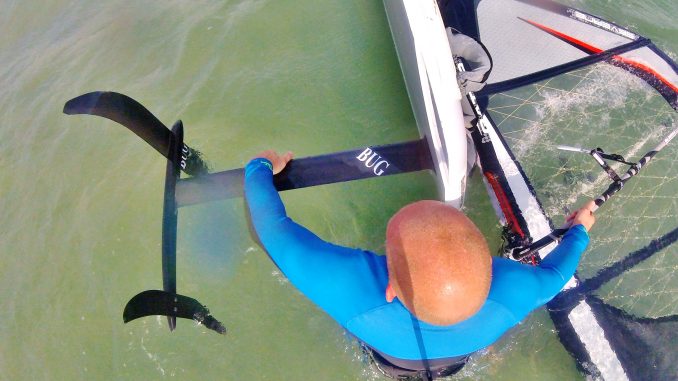
We’ve been on the windsurfing foiling horse for a while now, and we’re still learning! It’s by no means a ‘cracked’ thing. That in itself makes wind foiling addictive and rewarding. In the second part of our foiling findings articles we list more of what’s been discovered during flight times. If you missed the first part then check it out –
http://www.windsurfingukmag.co.uk/what-windsurf-foiling-has-taught-us-so-far-journey-into-the-new/
Some wind is actually good!
It’s easy to look at windsurfing foiling and think it’ll be that magic toy that can be used in no wind. You know, the thing we all want: i.e. to get planing (or flying) in zero knots – you can’t! We do actually need some breeze unfortunately. Not as much as when you’re on your conventional windy kit, granted, but some. In fact, anything around 12 knots is a good start. Going less than 10 is actually quite technical. But come on, don’t be greedy, in previous lives 12 knots probably wouldn’t have even been sniffed at, let alone desired. 12-18 knots foiling is more fun than you’ll be having on big slalom/freeride gear any day.
Big rigs STILL feel big
We totally get the fact that foiling has opened up light wind windsurfing and riders want to get flying in as little breeze as possible. For us though, the beauty of foiling is that you can use your standard size sails (4.7m-6m for instance) in the same wind strength your big rigs were once utilised. Plugging those same huge bits of sail cloth into your foil board for even lighter wind flying is great but the rig is STILL big – there’s no getting away from it.
Also, most larger sails are designed to feel lighter when planing. At some point when foiling you’ll be huffing and puffing as you manhndle these bits of kit, such as when uphauling and when not foiling.
Chop is a REAL killer
We talked about chop in the first article and how lumpy seas feel really choppy. Well, they still do feel bouncy. It’s also worth bearing in mind that chop will halt forward momentum and therefore make flying increasingly hard – especially in lighter winds.
Slamming into the fronts of even small swells impedes progress and the ability to generate speed for efficient take offs. Therefore flatter water is best. For us, here at WSUK HQ, that means heading for our local harbours (watch out for sand banks!) or waiting for lower tides.
Lifting to lift further
Recently we’ve been getting into moves (no, not loops!) – in particular jumping. For those still sceptical jumping whilst foiling is actually quite easy. The additional aerial lift you get when done correctly can be insane – a familiar yet unfamiliar feeling if you will. Even more so when you stop and think there’s a huge carbon dangly thing poking out of the board’s tail.
Using the springyness of the foil is how to get airborne. Just don’t let go and make sure you’ve plenty of room around.
You can go too wide…
…with your board that is. Now maybe this is a personal preference but going all out for super wide slalom or even formula boards isn’t the best, especially the biggest versions. Many non-foil ready sleds have mast tracks and footstrap positions that are at odds with foiling – the whole thing being slightly awkward when flying. Also, by having ‘more’ board means you’ll need more power to take off.
Carrying foiling kit is STILL a pain
Moving on from the above point we’ll admit we have gone slightly wider – from 75cm to 79cm. While this has given more leverage for performance orientated riding it’s meant manoeuvring the damn thing – especially when all coupled up – has become trickier. We’ll not lie, it’s a pain getting to and from the launch, and there are usually a steady flow of muttered expletives as we progress to the water’s edge. Hopefully you won’t have too far to go as that’d be a killer! In this instance it’d probably worth carrying as components.
Kicking the foil REALLY hurts
Our current foil set up features a seriously substantial mast, fuselage and front/back wings. In particular the trailing edge of the foil’s mast is knife like – we’re pretty sure you could slice bacon with it. Kicking the mast accidently is therefore incredibly painful, as you’ll probably appreciate!
Yes, we’ve heard all the advice about not water starting but sometimes we can’t resist – the path of least resistance is sometimes too tempting. Just don’t wallop that carbon if you choose to do the same…
Foils can be fast
There’s a perception that windsurfing hydrofoils can be slow – or at least slower than racers on slalom gear. That may be true with some but there are others that are quite fast. We know this from experience racing a few of the slalom boys at our local.
OK, it’s all relative. A slalom sailor on a 9.2m versus a 5.3m foil rider is always going to generate more drag. Stick them on a 5.3m and no doubt they’d be leaving us for dust. Actually, if racers were on 5.3m’s we’d not be out foiling!
Stop and stare
As with the first article’s comment about everyone wanting to talk about your foil gear there’ll be a number of gawpers who, when they spot you flying, will stop and stare, wondering what on Earth you’re doing.
It’s quite refreshing to be part of a still unique movement so lap it up and smile wide…
We’re sure as our foiling journey progresses even further there’ll be more revelations. Stay tuned and if anyone’s got any windsurf foiling experiences or observations of their own then do let us know.

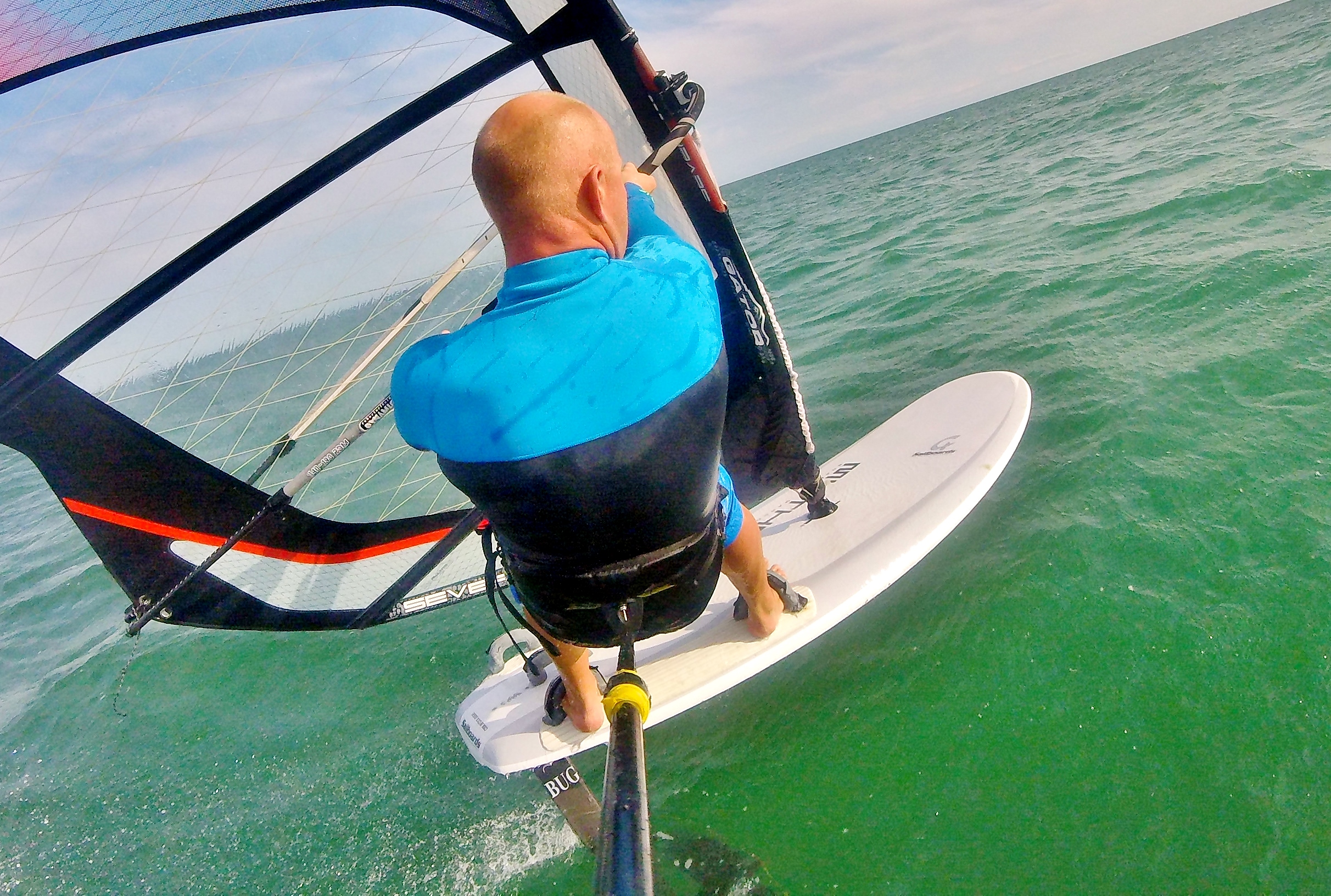
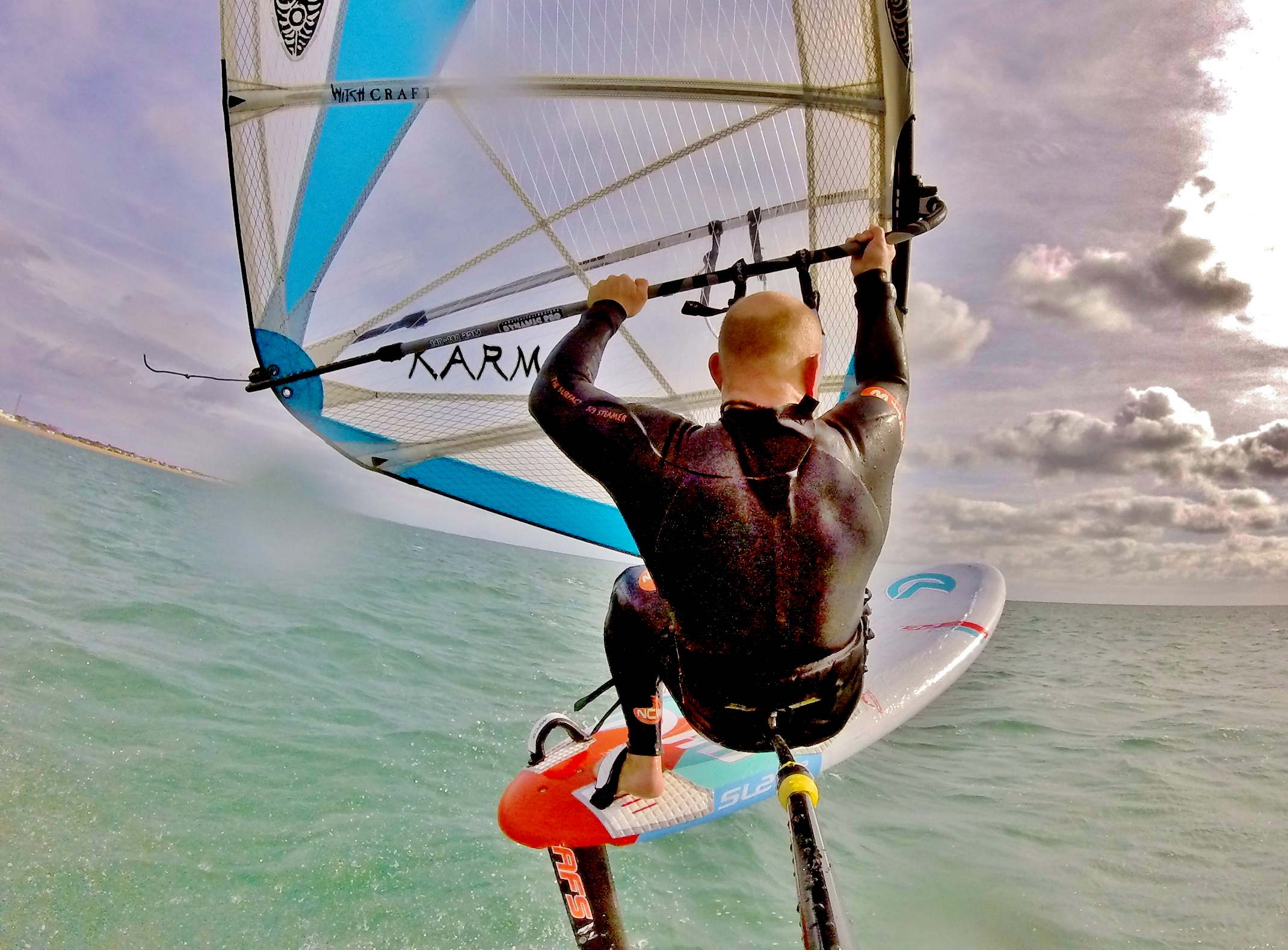
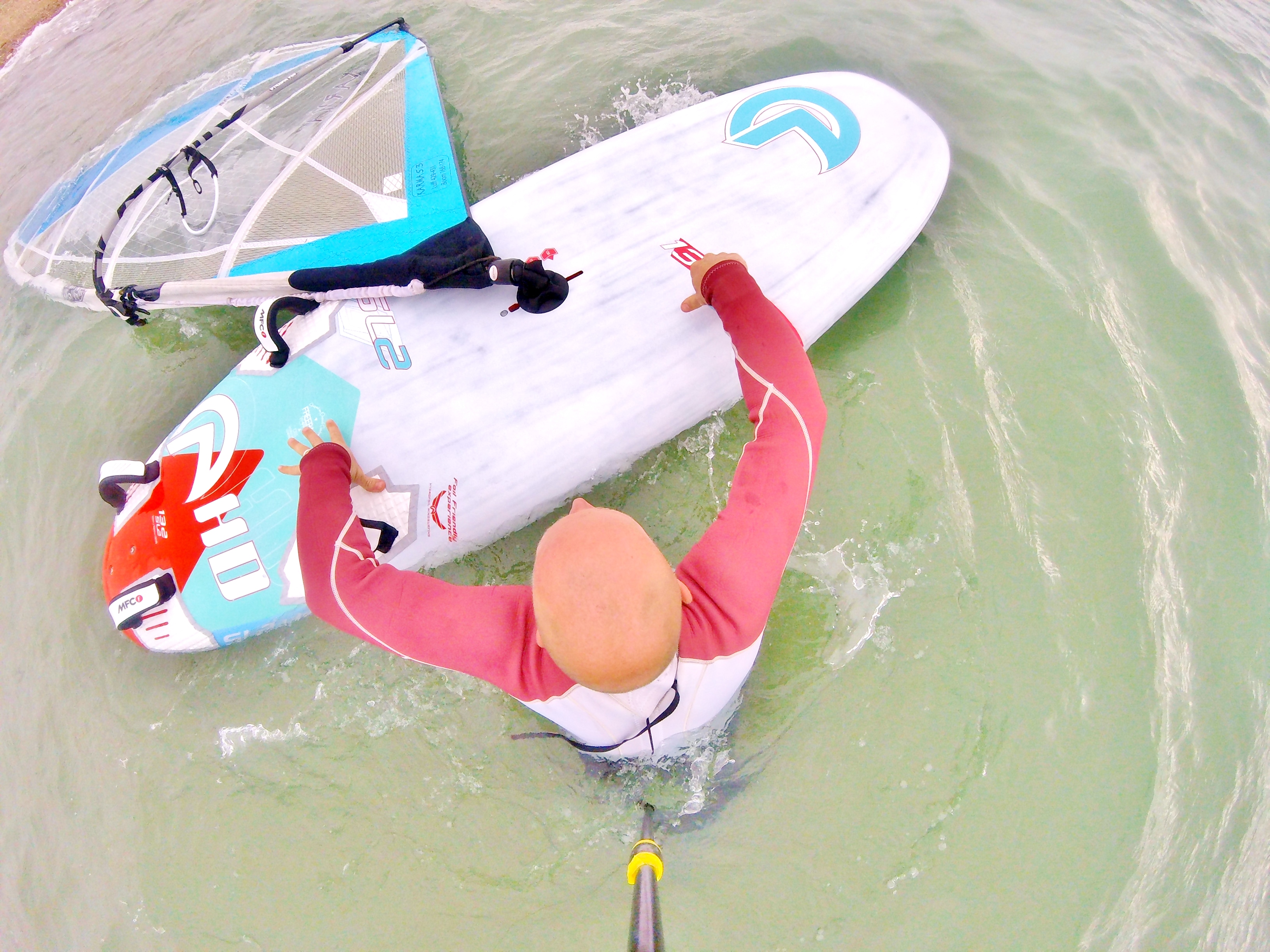
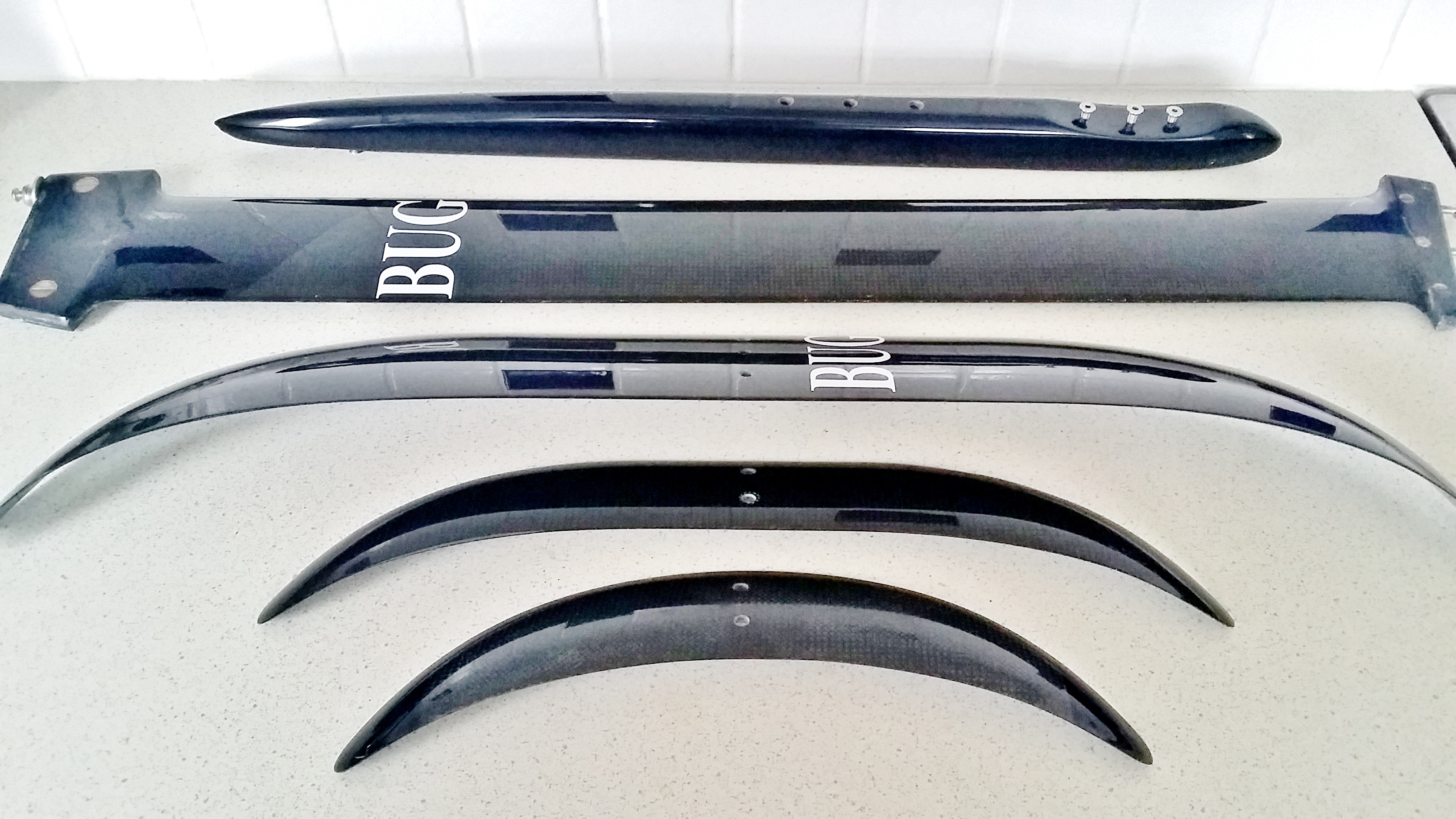
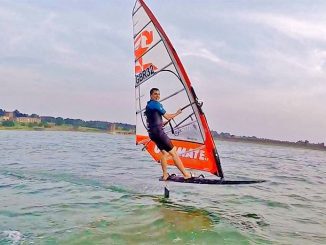
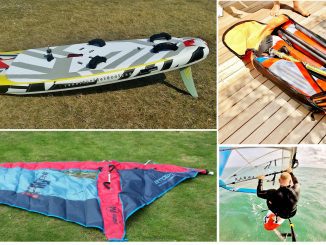
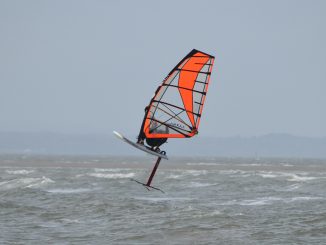
I got inspired to foil by Kai Lenny cruising open ocean swells with no sail.
I thought if Kai can do it without a sail, I can do it with a sail. The sail would make it easier to say on the board, and easier to get started, and give me a way to go upwind too, not just downwind.
My first setup was a lot of fun, but I felt like I needed a bigger sail than I wanted and I was not riding swells.
I then changed to a large downwind type foil and my sail size dropped again, as did my minimum wind speed, and I can now go slow enough to ride the swells. I do a lot of carving on swells, similar to what you see surfers doing, vs. going in a straight line.
I think I prefer this type of foiling as we have a lot of swells at my location, and it gets me closer to my original goal of riding the swells.
I still feel like I have not found the perfect foil and will be trying a 3rd one this week.
One tip, if you have shore break at your location like I do, it can be very challenging and a bit risky to carry the board and sail out together.
To overcome this I do a two step exit. I have a mechanical mast base which allows me to easily take the sail off in the water because the mechanical does not need to be upright at all times.
I then exit carrying the board with the foil facing away from me. I rest if on the beach and then go back in for the sail. It might take about 30 seconds more to exit, but it makes it easy to exit in all conditions.
Great insights there Bryn!